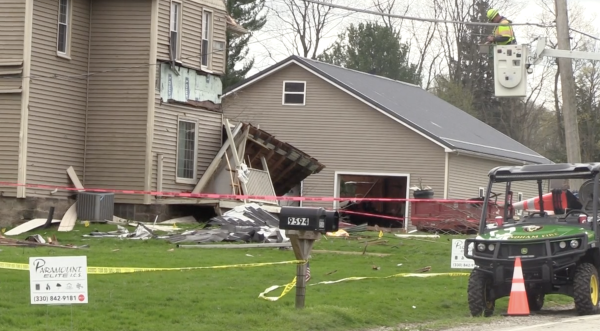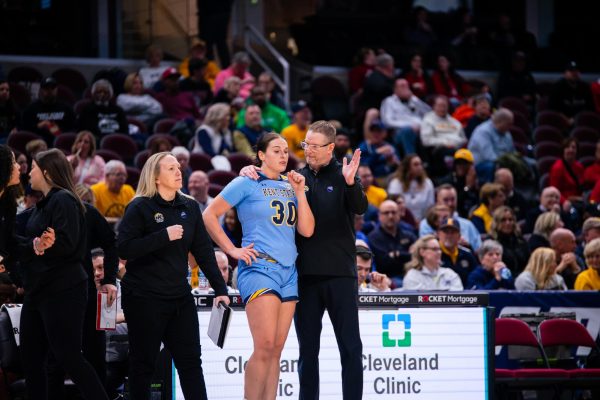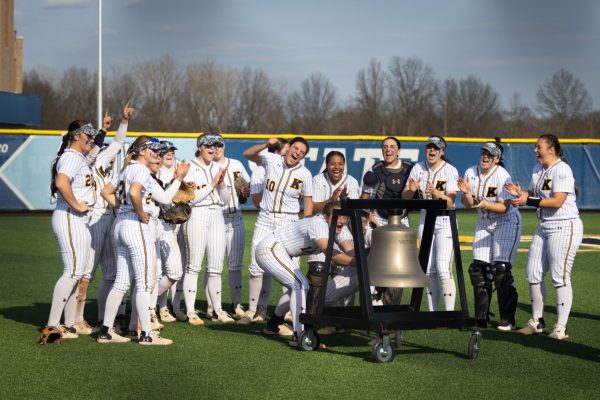From blood alcohol levels to grade point averages
January 31, 2005
National study compares students’ drinking to their academic performance
Freshman fashion design major Jordan Plottner blows into a breathalyzer Friday night at Wright Hall after having a beer. Kent health education graduate students Lexi Blavos and Les Lowe administered tests and recorded students blood alcohol levels, if any
Credit: Beth Rankin
Students are not getting paid to get drunk, despite rumors around campus.
The alcohol study being conducted in Wright and Lake halls does not pay students to get drunk, but to participate in a program comparing blood alcohol levels to GPAs.
The study, sponsored by a grant from the National Institute of Alcohol Abuse and Alcoholism, runs from 10 p.m. to 3 a.m. every Wednesday, Thursday, Friday and Saturday night.
Professor Dennis Thombs and Associate Professor Scott Olds are in charge of the study.
“We’re examining the relationships between academic performance and student drinking,” Olds said.
Students who register and participate are being paid $1 a night to take a breathalyzer test, even if they have had nothing to drink. The student’s blood alcohol concentration has no effect on the amount of money the student receives at the end of the semester.
Students who attend all four nights get paid double for each week. The student must live in Wright or Lake halls to participate.
Each night, the students sign in to a laptop computer using a name and password. Students then breathe into the breathalyzer machine, operated by Lexi Blavos, a graduate research assistant.
“We’re not here to advocate anything or tell anyone what to do,” Blavos said.
Many modern-day alcohol studies are question-answer survey questions. This study is different because it ensures students are honest about grades and alcohol experience, according to Olds.
“It’s important because this study relies on more verifiable data,” Olds said.
The breathalyzer test takes a student’s exact blood alcohol levels and with student permission, the exact GPA from the student’s academic records.
Students are not permitted to see the results of the breathalyzer test until the end of the semester, preventing competition between the students.
Andrea Campbell, freshman fashion merchandising major, attends the study every night possible, she said.
“I come down here for the money,” Campbell said.
The study is done primarily among first-year students in the residence halls because the first year is when most academic problems arise, according to Olds, who also said the halls where the studies are done contain 75 percent to 80 percent freshmen.
This is the first year of the three-year study and so far, there have been no major problems, according to Blavos.
“We’ve had a great turnout and really great support from the kids,” Blavos said. “They’re really making the study worthwhile.”
Contact room and board reporter Alison Turner at [email protected].
























